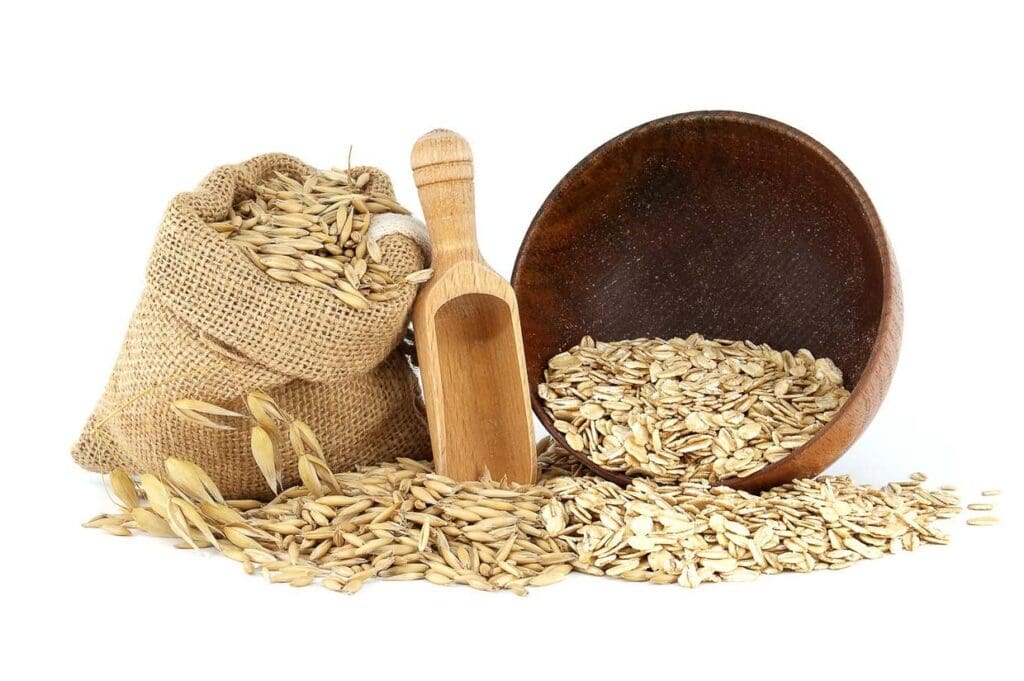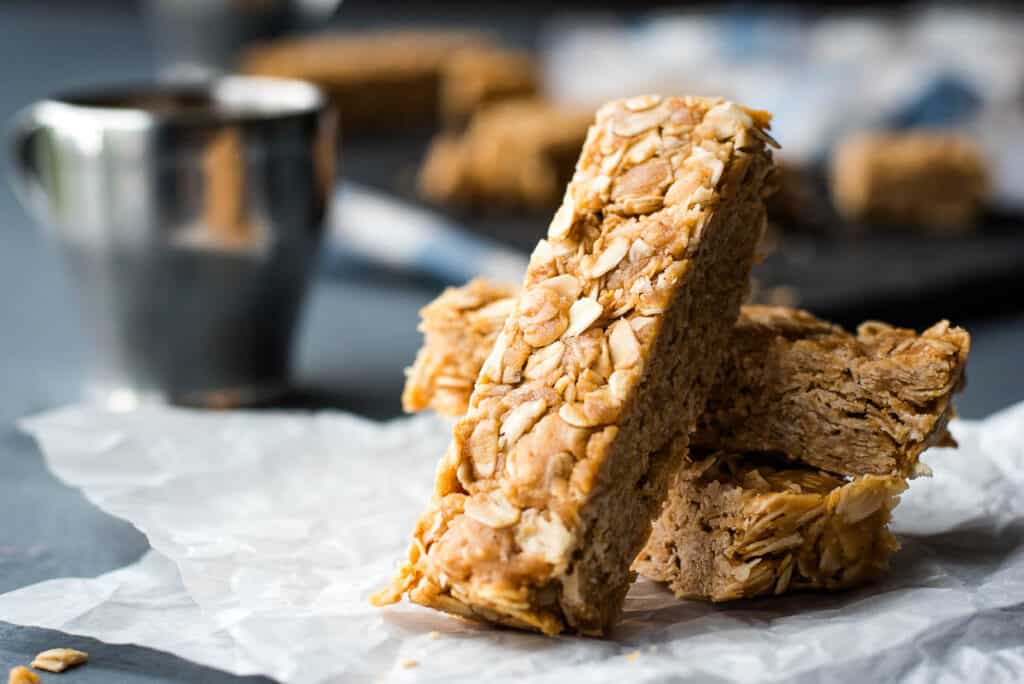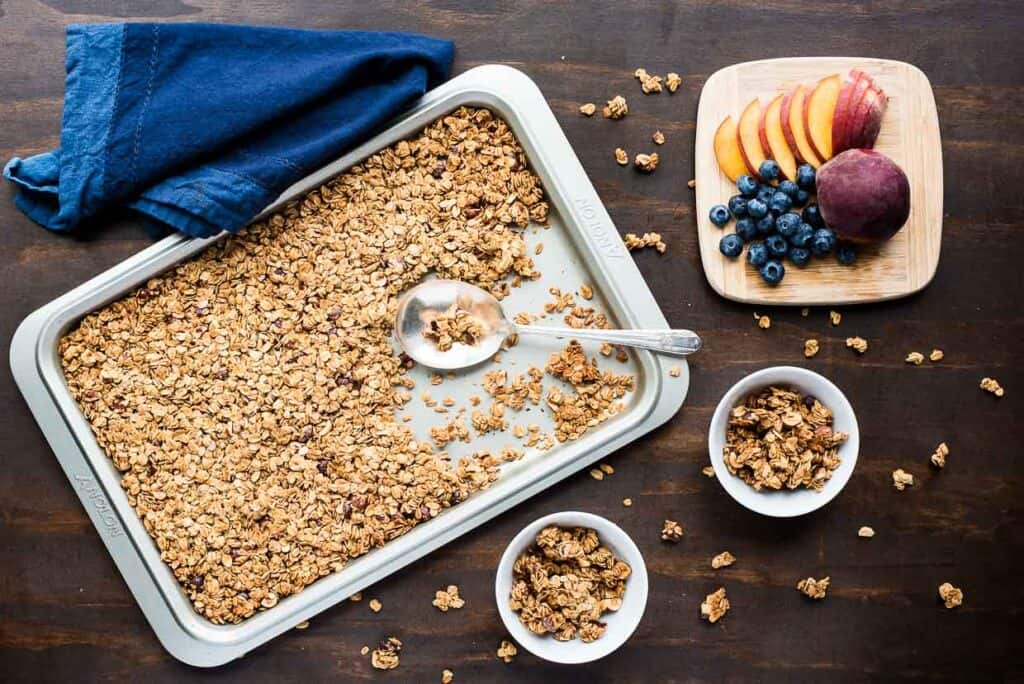From simple, instant breakfasts to hearty meals made from steel-cut varieties, oats are the humble pantry staple that offers a world of culinary possibilities. This article covers the different types of oats, how to use them and a glimpse into their history.

The history of oats
Humans have cultivated oats for thousands of years, with traceable origins back to the Fertile Crescent, sometime around 2000 BCE. While they were initially grown for feeding horses and other livestock, their hardy nature, disease resistance and ability to thrive in various conditions made them a viable food source that gained popularity with humans during the medieval period.
In the modern world, oats have found their place in a wide variety of dishes, as they are now cultivated worldwide. Naturally gluten-free, oats are touted by nutritionists for their high fiber and heart-healthy properties and by eco-conscious consumers for their sustainability and low environmental impact. Oats have moved far beyond a basic bowl of oatmeal and become a star player in innovative recipes that help fuel the sustainable food movement.
Types of oats
Not all oats are equal. They come in various forms, with three main types dominating the pantry: steel-cut, rolled and instant oats. They vary based on how they are processed, with each type bringing its unique texture and cooking characteristics to the table. Understanding their differences will help you know which ones are most compatible with your palate and how to make the most of them in your own kitchen.
Steel-cut oats
Steel-cut oats are the least processed of the three most common types of oats. After harvesting, processors remove the outer hull or husk of the oat kernel, leaving behind the inner groat. They then use steel blades to slice it into two or three pieces, hence the name steel-cut oats. Manufacturers also package and sell them under the names Irish oats or pinhead oats.
These oats have a chewier texture and nutty flavor that shine in recipes that require a heartier, more substantial texture. These oats will take longer to cook and rarely take on the mushy characteristics of instant oatmeal.
While these oats can be too chewy for some tastes, they are ideal to use in crockpot oatmeal or any cooked oatmeal when seeking a chewy texture. Use caution when swapping steel-cut oats into baked recipes.

Rolled oats or old-fashioned oats
When it comes to oat processing, rolled oats are your middle-of-the-road oat. Like steel-cut oats, rolled oats are harvested and hulled, but instead of cutting the inner groat, it is quickly steamed to soften it, then flattened into flakes between large rollers.
These oats can also referred to as old-fashioned oats or old-fashioned rolled oats because this is the method most often used around the late 19th century when oatmeal first began to be commercially produced and marketed to the public.
Rolled oats are not as chewy as steel-cut oats but have much more texture than instant oats. These are the oats most often used in bread, cookies and granola. They are also suitable for chewy, uncooked overnight oats and making creamy cooked oatmeal.
“Oats are a staple in my kitchen. We enjoy oatmeal for breakfast almost daily, and I often incorporate them into many baking recipes, including cakes, cookies and bread, and they are perfect to use in a crumble topping. In my experience, rolled oats outshine instant oats in flavor and texture when baking with them. I love steel-cut oats for their nutty flavor, but I don’t bake with them because they require additional liquids because of their denser texture, which changes the recipe and baking times.”
— Jere’ Cassidy, One Hot Oven
FDL’S 75 Best Bites

Our cookbook with 75 tasty recipes will be your go-to kitchen companion for easy dinners with ad-free recipes right at your fingertips. Crafted by experienced chefs and recipe developers, this collection offers a treasure trove of tried-and-true dishes that make mealtime a breeze.
Get the Recipe: FDL’S 75 Best Bites
Instant oats
Instant oats, also known as quick oats, are a highly processed form of oats designed for quick and easy preparation. Like steel-cut and rolled oats, instant oats are harvested and hulled, leaving the whole oat groat. The oat groats are then steamed for an extended time to pre-cook the grain and prepare it for quick rehydration. Finally, processors roll the oats, creating flakes that are much thinner than old-fashioned oats.
The extended processing allows instant oats to cook rapidly, but they do not retain much texture. Also, their flavors are less nutty and more subtle than their less processed counterparts.
Instant oats are often marketed as a quick and easy breakfast, sold in single-serve packets that can be prepared by simply adding hot water or milk. Unflavored instant oatmeal is a great addition to smoothies and pancake batter or when layered with Greek yogurt for an oatmeal parfait.

Less common types of oats
While instant oats, rolled oats and steel-cut oats are the most common and widely available types of oats, there are a few lesser-known oat varieties whose availability varies. These less common oat types include:
- Oat groats: Whole oat groats are the least processed form of oats, with the outer hull removed but the bran layer intact. They are the most nutritious and have a very long shelf-life but require longer cooking times and aren’t as readily available in most grocery stores.
- Scottish oats: Scottish oats are stone-ground, creating a coarse texture that falls between rolled and steel-cut oats. They are traditionally used for making Scottish porridge and have a hearty, nutty flavor.
- Oat flour: Oat flour is made by grinding oats into a fine powder. It is often used as a gluten-free flour substitute in baking and can also be used to thicken soups and sauces.
- Oat Bran: Oat bran is the outer layer of the oat kernel and is rich in fiber and nutrients. A byproduct of the oat milling process, it is often used as a dietary supplement or added to baked goods for a nutritional boost.
The wonderful world of oats
Whether you’re crafting quick breakfasts, delectable desserts or savory dishes, the varied types of oats have showcased their adaptability for both sweet and savory creations alike. From the robust flavor and texture of steel-cut oats to the simplicity and ease of instant varieties, oats are an incredibly versatile ingredient that has earned its place as a pantry staple for home cooks around the world.
Renee N Gardner is the creative mastermind behind Renee Nicole’s Kitchen, a recipe blog based on seasonal ingredients, dedicated to helping home cooks build their kitchen confidence to become home chefs. When Renee isn’t writing, developing recipes or photographing food, you’ll find her in the garden, traveling or enjoying the outdoors with her husband, son and two dogs.